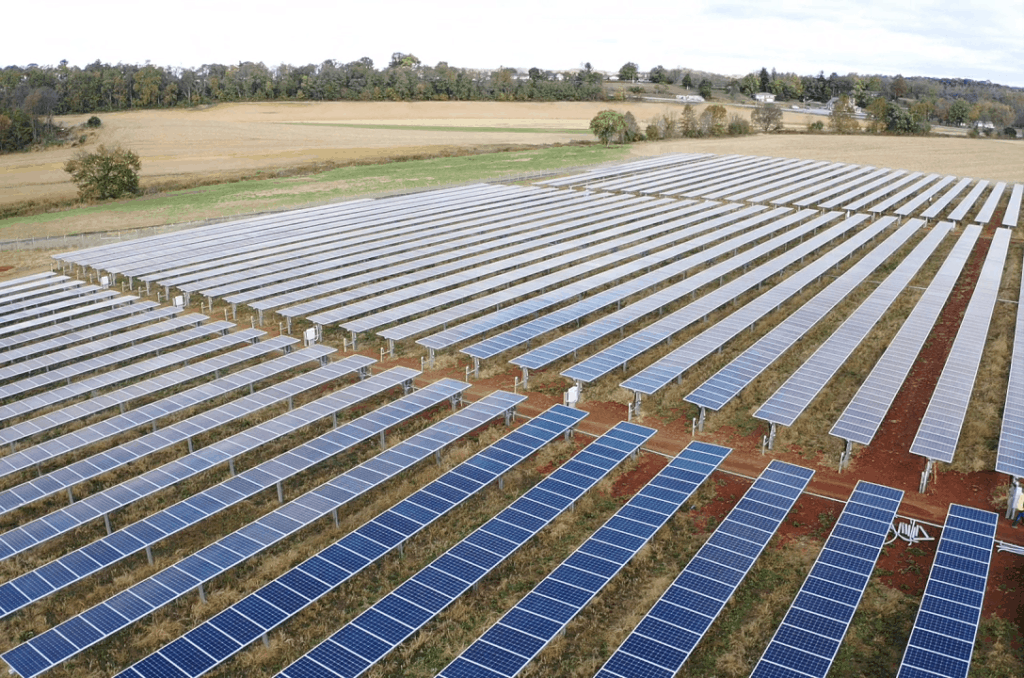Anne Arundel County’s First Community Solar Project Set to Start in July

By Krista Pfunder
Planned community solar projects—solar power plants that allow neighbors the opportunity to share the benefits of solar power even if they can’t install panels on their own property—are making cost-saving renewable energy more accessible.
Tracy’s Landing will be home to Anne Arundel County’s first community solar project, slated to go into service in July 2021. The project will be open to 235 BGE residential customers.
The Checkerspot Community Solar Project is expected to save subscribers 10 percent on their bills, the equivalent of getting over one month of electricity free, every year.
“Community solar projects mean solar isn’t just for people who own their own home,” says David Murray, executive director of the Maryland-DC-Delaware-Virginia Solar Energy Industries Association. “Those who rent or own condos can also save money and go green.”
Covering more than nine acres, the Checkerspot project supports the habitat of bees and butterflies and produces enough clean energy annually to equal taking 466 cars taken off the road for one year.
Dubbed a hybrid between utility programs and home solar, community solar is a pilot program operating with Public Service Commission oversight. It contributes to Maryland’s 2019 Clean Energy Jobs Act requirements for generating about 14.5 percent of the state’s electric consumption by 2030.
“The program provides Marylanders access to solar energy from offsite projects,” says John Finnerty, director of business development for Standard Solar in Rockville, which funds, operates and maintains the Checkerspot project. “Marylanders can subscribe to a selected solar project site within their utility service area and often are benefiting from rate savings just by subscribing.”
Maryland’s community solar pilot program—started in 2017—is a natural fit for counties like Anne Arundel and Calvert with rural areas.
“Often overlooked is that rural communities are quickly becoming some of the biggest beneficiaries of community solar farms,” Finnerty says. “Community solar is an economic engine available to rural Maryland communities, and it is even more valuable as the US economy emerges from the challenges posed by COVID-19.”
A typical community solar project can deliver over $1 million in savings directly to its subscribers, and about $2 million in combined payments to the local county in taxes and lease payments to the site landowner.
“Maryland’s community solar pilot program has a policy capacity for about 140 projects statewide—an estimated $420 million in direct local savings to subscribers and local revenue,” Finnerty says.
Another community solar project is poised to break ground this year in Harwood and another is being considered at a closed county landfill in Glen Burnie.
“The Harwood project will provide enough clean and renewable electricity to power approximately 400–500 average homes on an annual basis,” says Jesse Cutaia with Community Energy in Radnor, Penn. The Harwood project is being developed by Harwood Solar LLC, a subsidiary of Community Energy Solar.
Construction on the Harwood project is set to start this summer. It is expected to be up and running by the end of 2021. The county is also considering a project at a closed county landfill in Glen Burnie.
“The community can sign up to be a subscriber of the project, which will provide a discount on their electrical bill, typically of around 10 percent,” Cutaia says. “The project will also boost local tax revenue and provide Anne Arundel County residents the chance to join in meeting Maryland’s renewable energy goals, which help fight climate change and ensure clean air and a healthy environment for all.”
